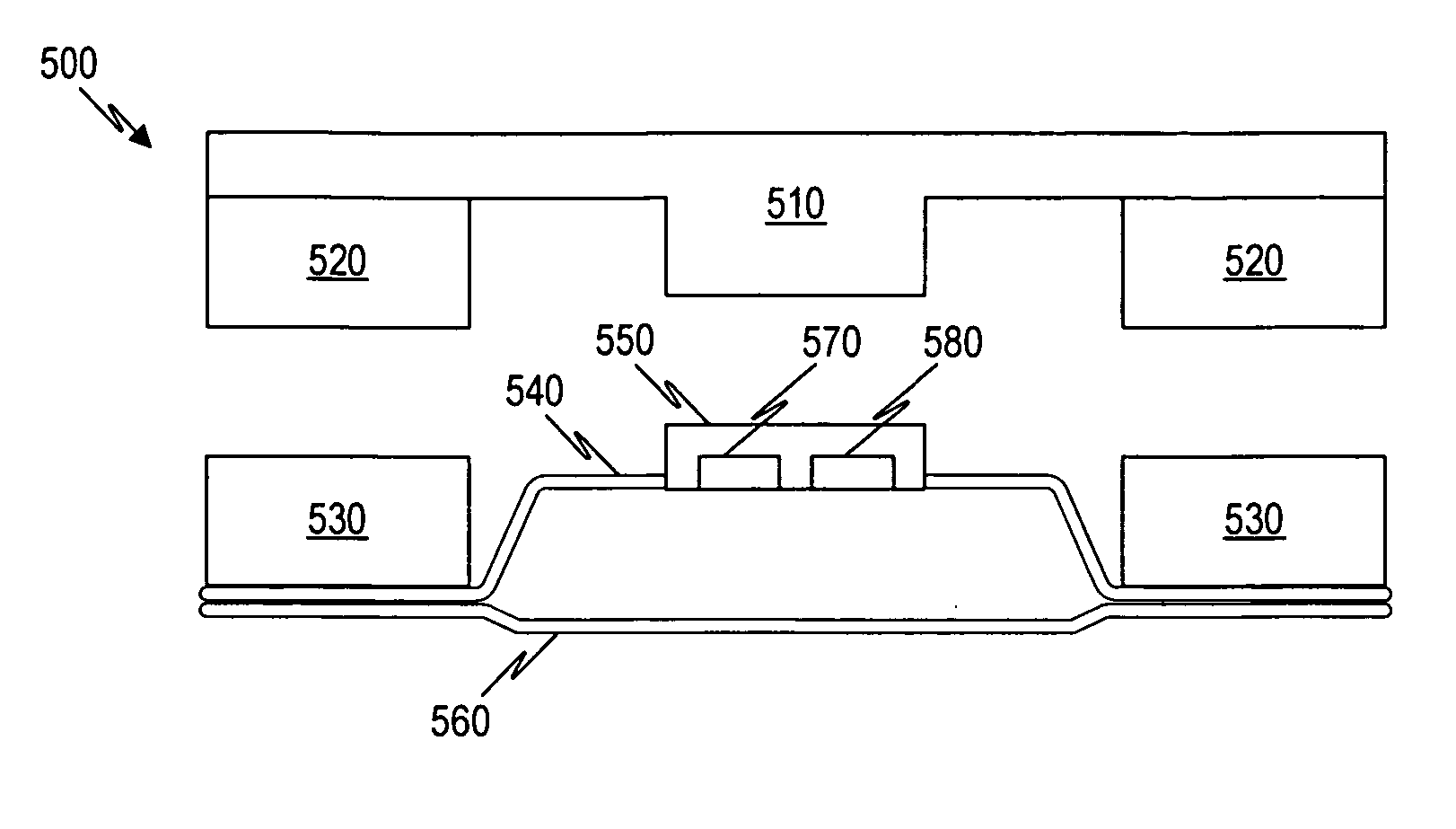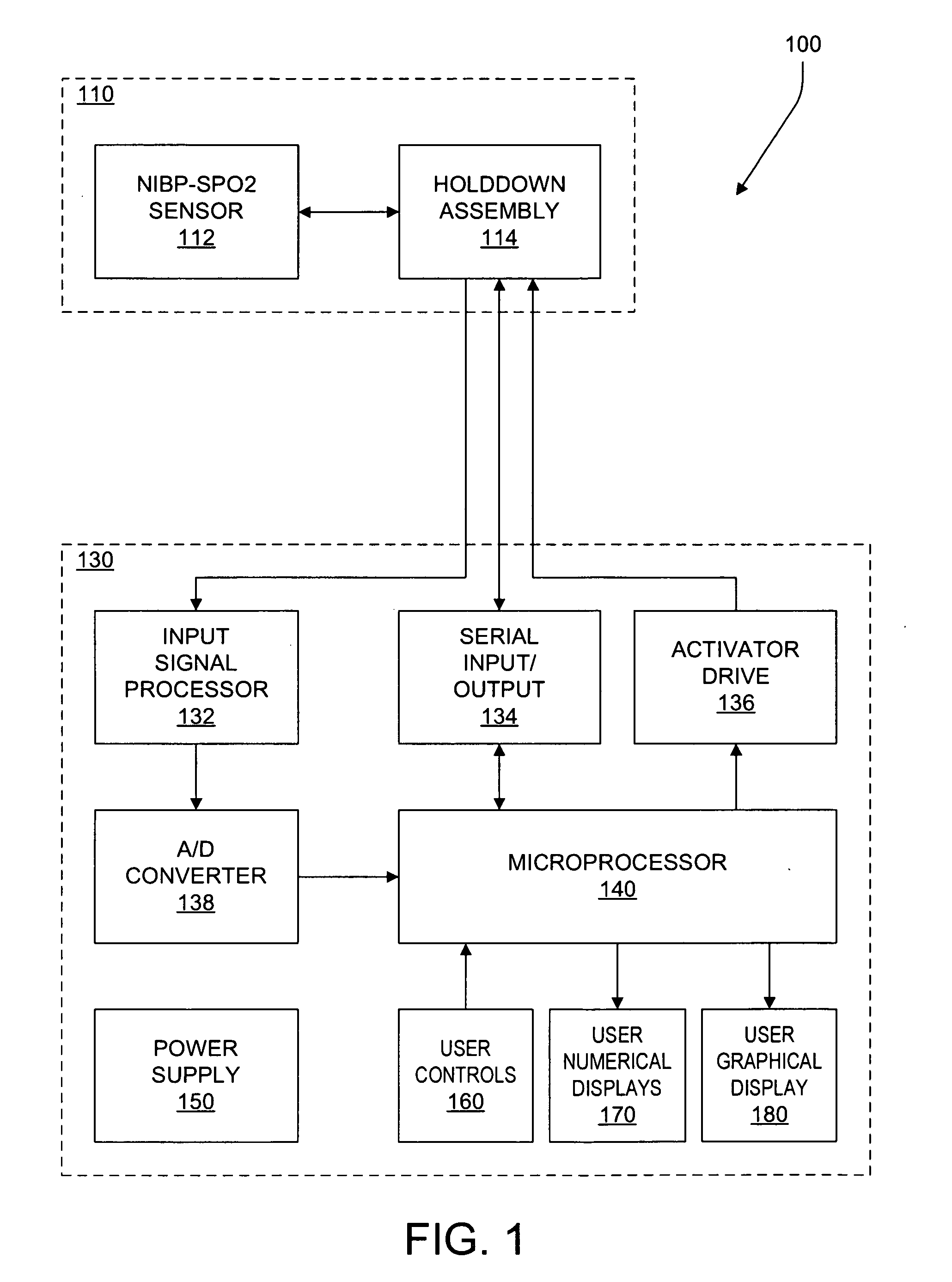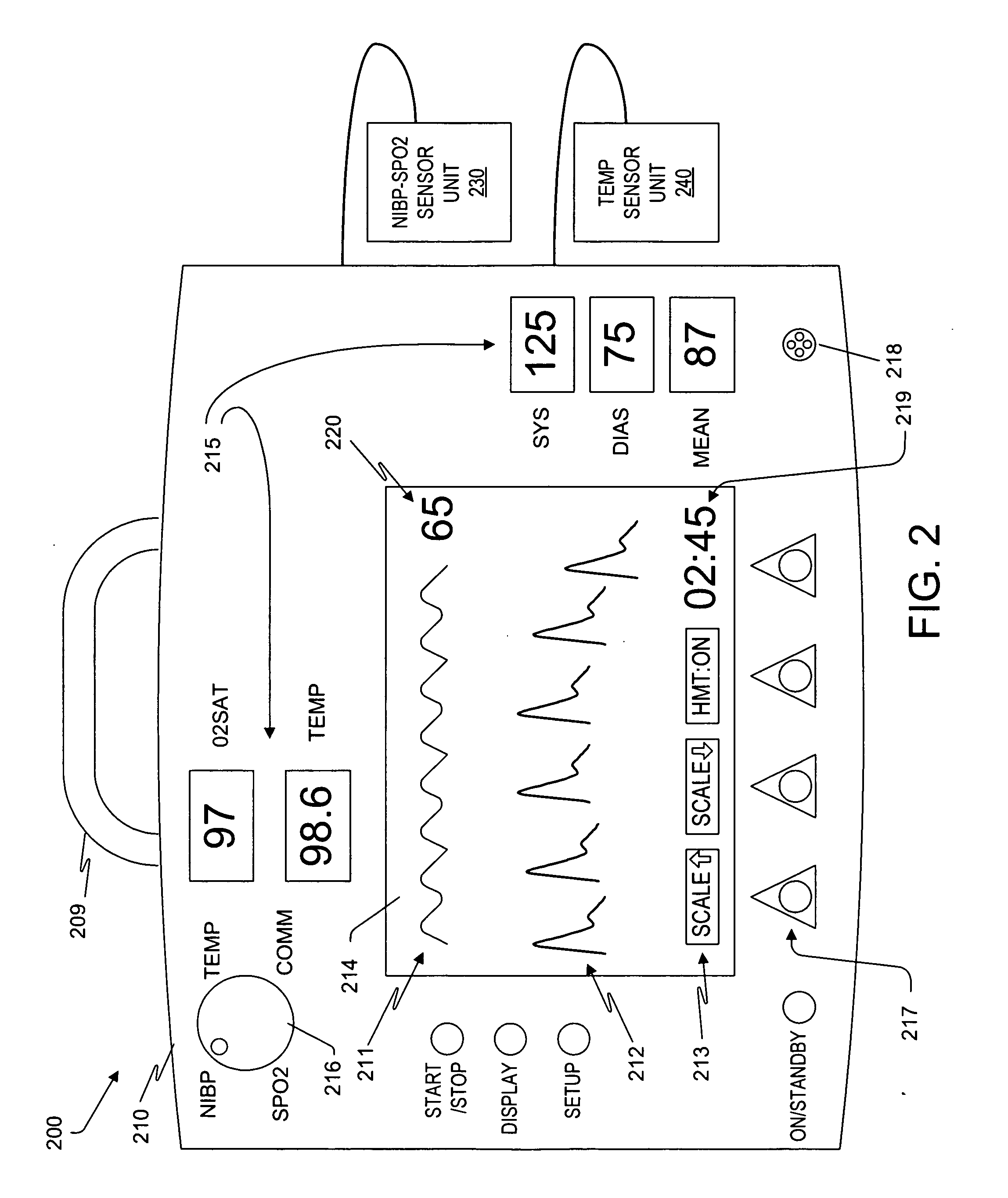Noninvasive vital signs sensor
a sensor and vital sign technology, applied in the field of acquisition of data for patient vital signs, can solve the problems of affecting any “downstream” measurement, not being entirely suitable for frequent measurements and measurements, and not being able to perform frequent measurements and measurements
- Summary
- Abstract
- Description
- Claims
- Application Information
AI Technical Summary
Benefits of technology
Problems solved by technology
Method used
Image
Examples
Embodiment Construction
[0048]FIG. 1 is a schematic block diagram of an illustrative system 100 suitable for non-invasively monitoring blood pressure “NIBP”) and blood oxygen saturation (SpO2). Advantageously, a sensor assembly 110 includes a sensor 112 which is capable of providing data for calculating pulse rate as well as both blood pressure (for example, systolic, diastolic, and / or mean pressure) and blood oxygen saturation, and in some embodiments, for calculating perfusion as well. Additionally, other sensors may be included, with the inclusion of a temperature sensor unit 140 being desirable for a vital signs monitor and the inclusion of various additional types of sensors being desirable for a bedside monitor.
[0049] The system 100 includes the sensor assembly 110 and a control and display system 130. The sensor assembly 110 and the control and display system 130 may be combined within a common housing, or may be provided as separate and distinct units connected by a cable (not shown). Suitable typ...
PUM
 Login to View More
Login to View More Abstract
Description
Claims
Application Information
 Login to View More
Login to View More - R&D
- Intellectual Property
- Life Sciences
- Materials
- Tech Scout
- Unparalleled Data Quality
- Higher Quality Content
- 60% Fewer Hallucinations
Browse by: Latest US Patents, China's latest patents, Technical Efficacy Thesaurus, Application Domain, Technology Topic, Popular Technical Reports.
© 2025 PatSnap. All rights reserved.Legal|Privacy policy|Modern Slavery Act Transparency Statement|Sitemap|About US| Contact US: help@patsnap.com



